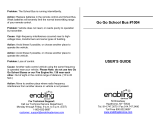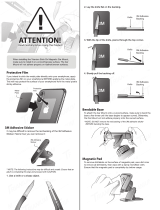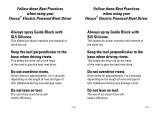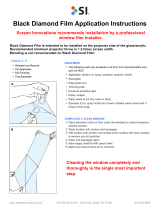3M Diamond Grade™ Conspicuity Markings 983-71NL, Yellow, Roll Configurable Operating instructions
- Type
- Operating instructions
3M Diamond Grade™ Conspicuity Markings 983-71NL, Yellow, Roll Configurable
The 3M Diamond Grade™ Conspicuity Markings 983-71NL are a high-quality, durable product designed to enhance the visibility and recognition of school buses. These markings are made from a pressure-sensitive adhesive that can be applied to many clean, dry, weather-resistant surfaces.
Some of the key benefits of the 3M Diamond Grade™ Conspicuity Markings 983-71NL include:
- High visibility: The bright yellow color and reflective material of these markings make them highly visible, even in low-light conditions.
- Durability: These markings are made from a durable material that is resistant to fading, peeling, and cracking.
3M Diamond Grade™ Conspicuity Markings 983-71NL, Yellow, Roll Configurable
The 3M Diamond Grade™ Conspicuity Markings 983-71NL are a high-quality, durable product designed to enhance the visibility and recognition of school buses. These markings are made from a pressure-sensitive adhesive that can be applied to many clean, dry, weather-resistant surfaces.
Some of the key benefits of the 3M Diamond Grade™ Conspicuity Markings 983-71NL include:
- High visibility: The bright yellow color and reflective material of these markings make them highly visible, even in low-light conditions.
- Durability: These markings are made from a durable material that is resistant to fading, peeling, and cracking.





-
 1
1
-
 2
2
-
 3
3
-
 4
4
-
 5
5
3M Diamond Grade™ Conspicuity Markings 983-71NL, Yellow, Roll Configurable Operating instructions
- Type
- Operating instructions
3M Diamond Grade™ Conspicuity Markings 983-71NL, Yellow, Roll Configurable
The 3M Diamond Grade™ Conspicuity Markings 983-71NL are a high-quality, durable product designed to enhance the visibility and recognition of school buses. These markings are made from a pressure-sensitive adhesive that can be applied to many clean, dry, weather-resistant surfaces.
Some of the key benefits of the 3M Diamond Grade™ Conspicuity Markings 983-71NL include:
- High visibility: The bright yellow color and reflective material of these markings make them highly visible, even in low-light conditions.
- Durability: These markings are made from a durable material that is resistant to fading, peeling, and cracking.
Ask a question and I''ll find the answer in the document
Finding information in a document is now easier with AI
Related papers
-
3M Diamond Grade™ Conspicuity Markings 983-32, Red/White, 25000781, Wabash Logo, Kiss-cut every 18 in, 2 in x 50 yd Operating instructions
-
3M Diamond Grade™ Rail Car Markings Series 983 Operating instructions
-
3M Hot Melt Applicator Accessories Operating instructions
-
3M Scotchgard™ Surface Protection Film 2200 Operating instructions
-
3M Hot Melt Applicator Accessories Operating instructions
-
3M 2093EL-SBTA Operating instructions
-
3M Condensation Management Film Starter Kit Operating instructions
-
3M Hot Melt Applicator Accessories Operating instructions
-
3M Scotch-Weld™ Epoxy Adhesive DP460EG Important information
-
3M Scotch-Weld™ PUR Adhesive TE200 Operating instructions
Other documents
-
soundskins 239SSPROSK User manual
-
 Enabling Devices 1004 User manual
Enabling Devices 1004 User manual
-
 Trianium TM000268 User guide
Trianium TM000268 User guide
-
DIAMOND PROTECH Diamond Interior User guide
-
 FLEXCO Electric Powered Rivet Driver Operating instructions
FLEXCO Electric Powered Rivet Driver Operating instructions
-
Xerox 003R06709 Datasheet
-
Unbranded 99440NL Operating instructions
-
Columbia Coronado 25 User manual
-
 Screen Innovations Black Diamond Film Operating instructions
Screen Innovations Black Diamond Film Operating instructions
-
K-Flex 6RXLO100158 Installation guide








